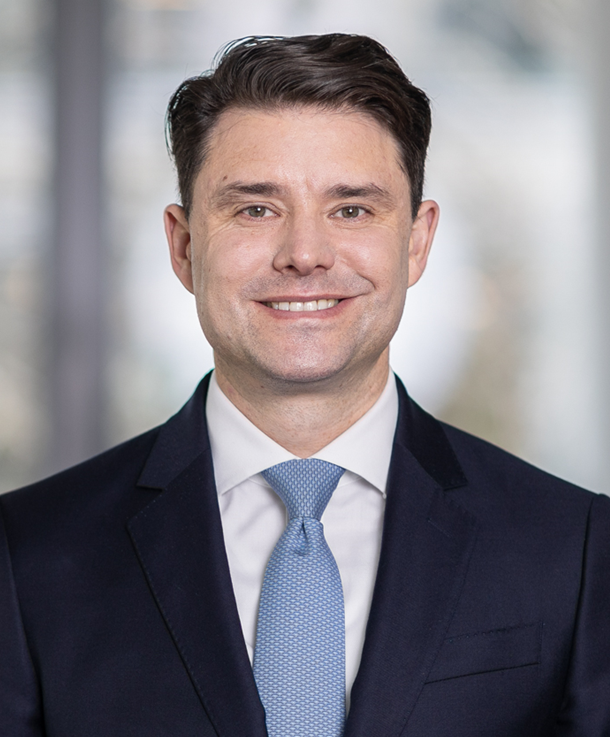Article: Funding and financing in an age of geopolitical uncertainty
The article was first published in the latest Securities Finance Times magazine
Clearstream’s Marton Szigeti and Eurex Repo’s Frank Gast explain how Deutsche Borse Group’s cleared and uncleared repo services are helping cash lenders and borrowers to meet their liquidity needs across a wide range of market conditions
Geopolitics is currently front of mind for Europe's financial authorities as they navigate the sector through a period of complex monetary readjustment. Conflict in the Middle East, Russia’s invasion of Ukraine and US-China tensions over Taiwan are just some of the political drivers which have reinforced financial uncertainty during this phase of post-pandemic adaptation.
These geopolitical tensions are superimposed on a period of central bank monetary ‘normalisation’ which featured the most aggressive tightening phase in the ECB’s history, prior to its four successive 25bps cuts since June 2024.
Against this background, Frank Gast, managing director, Eurex Repo, and global head of repo sales at Eurex, highlights three key trends that have defined activity levels through Eurex Repo during 2024. These are a contraction in levels of excess liquidity in the euro area, the easing of concerns around collateral scarcity, and increasing participation of buy-side firms in cleared repo.
“In the financing markets, we see a change of direction as a result of the reduction in excess liquidity,” he explains. “This has created an apparent contradiction where, even though there is still more than €2.8 trillion in excess liquidity outstanding, there are questions around whether there are enough players willing to lend cash in the European repo market.”
Cleared repo on elevated levels
At its peak, excess liquidity hit record highs of close to €4.7 trillion in 2022, but this has contracted as banks have repaid their loans taken under the third series of Targeted Longer-term Refinancing Operations (TLTRO) and the ECB has choked off reinvestment of the proceeds of bonds maturing under its asset purchase programme.
With the ECB adjusting its remuneration cap for non-bank deposits in May 2023, such that non-banks receive a ceiling of €STR-20bp on cash deposits placed with their national central banks, this prompted non-banks to seek alternative channels to deliver a more attractive yield on their cash.
This confluence of factors resulted in a major step up in activity through Eurex Repo during late 2022 and 2023. For the full year 2023, the average daily term-adjusted repo volume increased by 70% relative to 2022, climbing from €210.3 billion to €357.8 billion. The GC pooling market expanded by 142% YoY over this period, while the Special Repo market grew by 38% YoY.
However, this expansion has flattened off during 2024. “During the past two years, activity through cleared repo has hit peak levels,” explains Gast. “Overall repo outstanding volumes remained robust during 2024. While GC Pooling volumes increased by 7% YoY, volumes in specials have contracted by almost 10% at Eurex, primarily given reduced specialness in the German government bond segment.”
Explaining further, Gast notes that Debt Management Offices (DMOs) typically sell government bonds, receive cash and then reinvest this cash in liquidity markets, particularly through GC Pooling. “The lower levels of activity in EUR government bonds, particularly in ‘Bunds’, due to lower demand allied with a decline in the level of ‘specialness’, has resulted in DMOs holding lower cash balances,” he observes. This has resulted in a decline in cash lending from DMOs and state treasury agencies through cleared repo markets.
A strong year for triparty repo
While activity levels through cleared repo have flattened off during 2024, this has provided a fertile period for uncleared activity through Clearstream’s triparty repo segment. “In the cleared market, use of a CCP offers stability and standardisation; for banks this offers efficient balance sheet treatment for their funding and financing activities, but collateral flexibility is limited to a specified set of baskets,” says Marton Szigeti, head of collateral, lending and liquidity solutions at Clearstream. In contrast, financing through triparty or bilateral relationships enable counterparties to access liquidity against a wide range of collateral sets.
In the uncleared triparty repo segment, liquidity has grown as TLTRO III has run off and cash borrowers have needed to find other financing channels for harder-to-finance assets. Those assets have typically gone into the commercial bank world, with new and returning liquidity providers stepping up to meet this demand. Banks that had ceased to lend are now resuming their lending activity, corporates are lending in higher volume and buy-side firms have been active in search of yield opportunities in uncleared repo.
While this shift from collateral scarcity to relative collateral abundance has made high-quality liquid assets (HQLA) cheaper to access, banks continue to face regulatory and operational pressures that are driving them to review their approaches to collateralised trading activities. “This theme is now biting hard and banks are investing heavily to optimise their collateral more effectively,” says Szigeti.
Getting better at collateral optimisation
This, he says, will be a major focus for Clearstream during 2025. “For triparty providers, the strength of their optimisation services, and how well this is supported by effective data and analytics capabilities, will be a primary point of differentiation,” he adds. In turn, banks are examining their long boxes and evaluating what they can do to mobilise, optimise and allocate their collateral more effectively. “Some bank clients have identified collateral funding savings of tens of million euros across their global business by focusing on how they can improve their collateral optimisation,” he says.
Clearstream has made significant investment over the past few years in improving its own in-house artificial intelligence (AI) capability specific to collateral management. OSCAR, the collateral eligibility negotiation and collateral screening platform developed by Clearstream in association with IntelliSelect, has been rolled out to users via a staged release from early 2023 and is now being employed by more than 40 clients.
In February 2023, Deutsche Börse Group announced a relationship with Google Cloud that has confirmed the California-based hyperscaler as Deutsche Börse’s preferred cloud provider for the coming 10 years. This partnership will further support the development of the D7 digital platform, while supplementing Deutsche Börse’s data distribution and data analytics capabilities.
Building on these developments, Szigeti indicates that Clearstream will be extending its digital collateral platform to deliver some eye-catching advances during the coming 12 months. “This is not just applying AI and digital innovation to make existing processes more efficient,” he says. “Rather, it will transform these legacy processes, breaking down fundamental barriers that currently prevent banks from optimising their collateral as they would like. We are developing best-in-class digital and AI services that will take to a new level the custody-agnostic collateral optimisation that we are currently operating in five markets.”
With ESMA’s proposal that EU markets should move to T+1 settlement by October 2027, Clearstream is confident, from a securities services perspective, that it can support next-day settlement for most securities. “However, it is important to work through these challenges with participants in securities financing markets to ensure that we offer the tools to thrive in a T+1 settlement regime,” he says.
A T+1 securities settlement environment is, in effect, a T+0 environment for funding and financing. With securities lending and rehypothecation, this settlement process often involves a series of interlinked transactions where a settlement failure can lead to the failure of a whole chain of settlement instructions. In this context, the ability to access cash liquidity and securities liquidity on an intraday basis becomes essential to manage and unwind these chains of transactions.
“To date, this has not been a big issue in a T+2 environment because there is commonly time to resolve these concerns,” observes Szigeti. “But that will change when operating in a next-day settlement cycle.” With interest rates at their current levels, this is likely to have cost implications, and to present significant reputational risk, for firms that are confronted with a rise in settlement penalties as a result of their failure to manage this adaptation effectively.
Buy-side access to cleared repo
For the past three years, Eurex has focused on bringing more buy-side customers into cleared repo. Through ISA Direct and ISA Direct Indemnified, Eurex aims to combine the benefits of direct clearing access for buy-side firms with the benefits of sponsored access via a clearing member.
Reflecting on this initiative, Gast indicates that Eurex has continued to see new pension and insurance funds coming on board as cash providers. This offers access via a multilateral agreement to a wide range of potential cash borrowers, while also safeguarding their ability to access cash at short notice required to meet variation margin requirements under Uncleared Margin Rules.
More broadly, some pension and insurance funds are seeking to finance HQLA through cleared repo markets. As holders of large portfolios of high-quality assets, many of these funds previously sought to generate yield from these assets via an agent lender – and, as such, they are newcomers to cleared repo markets in financing these assets directly to the street. In this sense, Gast notes that cleared repo via ISA Direct is providing additional business opportunities to the buy side, not only to raise cash but also to sell collateral to the market.
Eurex has expanded this facility with indemnification to attract more hedge funds into cleared repo and early adopter clients are now completing their onboarding procedures. It is also working with clearing members to increase the number of sponsors active in the programme and expects by mid-2025 to add several banks to its list of sponsors.
In closing, Gast is confident that Eurex Repo will continue to increase buy-side participation in cleared repo during 2025 and beyond. It will also continue to attract supranationals and central banks to cleared repo, offering a stable and efficient infrastructure for these institutions to meet their liquidity management requirements. Discussions are in progress with several central banks and supranationals to become active in Eurex Repo in the new year.
For Clearstream, Szigeti invites readers to watch out for announcements later in 2025 relating to its application of AI to collateral optimisation and the innovation enabled through the computing power and cloud computing capabilities available through its partnership with Google. Recognising how large and complex are the collateral inventories of global financial institutions, it has taken several years to fully digitise collateral schedules, to build new data interfaces into participating custodians and, in doing so, to create a data lake that provides the foundation for this advanced optimisation service. With these building blocks in place, important advances are just around the corner.



